“Galleries are open and free to anybody”
A Conversation with Sybille du Roy, Director of Brussels Gallery Weekend
In the days between the 6th – 9th of September, Brussels Gallery Weekend invites art lovers from all around the world to celebrate the city’s rich gallery scene. We met with Sybille du Roy, director of Brussels Gallery Weekend, for a talk about this year’s event, Brussels’ growing art scene, and the importance of connecting a new young generation with art.

Can you tell us about the history of Brussels Gallery Weekend? What was the motivation to create this event and what is its particular DNA?
The Brussels Gallery Weekend was founded by Brussels’ galleries 11 years ago as a wish to increase their visibility, widen their audience and attract more international collectors. The goal of the event is to invite the public to explore the richness of the Brussels art scene – a scene whose DNA lives in the strength of its galleries.
How do you see Brussels Gallery Weekend’s current profile and its development since its foundation in 2007?
The Brussels Gallery Weekend consists of 39 galleries working together in Brussels towards common objectives. During the last few editions, an off-program was added to integrate other actors in the local landscape. This year, an exhibition of young artists is the newest edition to a constantly evolving event.
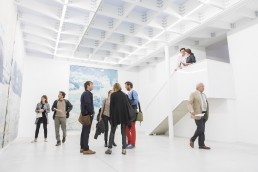
What sets Brussels Gallery Weekend apart from other gallery weekends across the world?
In Brussels, we have a large number of local and international galleries, but also institutions, non-profit space, artists, and collectors, as well as a public that is genuinely interested in art. All work together in making Brussels a great hub for contemporary art. Additionally, the Brussels Gallery Weekend has a unique position in the calendar. It marks the ‘back to school’ moment, the opening of the gallery season. It’s a moment when there are no key international fairs and when the weather tends to be wonderful in Brussels, which makes it a great weekend to walk around and discover the contemporary local art scene.
How was the process of mobilizing the city’s galleries to take part in and contribute to this event?
The galleries serve as the very foundation for Brussels Gallery Weekend, so I would say that they are the grounding energy of this event, while we’re the facilitator that makes it possible for them to collectively invite the public to celebrate the city’s rich art scene.
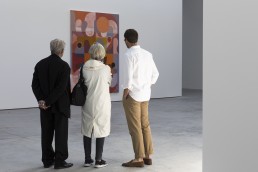
For the 11th edition, you present 39 galleries with a representation of both local and international artists. How important is the international outreach for you?
Over the past decade, the Brussels Gallery Weekend has become a well-known rendez-vous for the Belgian public. Brussels, however, is an extremely international city, the contemporary art market is a global one, and it stretches beyond the Belgian borders, which is of course an important ambition of the event. We attempt to do this through partnerships, communication strategies and cultivating a network of international VIPs and ambassadors.
Being part of Brussels’ thriving art scene with several art events taking place in the city throughout the year, how does Brussels Gallery Weekend fit into and challenge the environment in which it is staged?
Several art fairs take place in Brussels, the main one being Art Brussels in April. The Brussels Gallery Weekend is now considered the second biggest contemporary art event in the city after Art Brussels to which we are complementary. Every year you see a new event being organized during the Brussels Gallery Weekend. That these projects try to ride the back of the Brussels Gallery Weekend is a testimony to the special energy the galleries generate and spread across the city.
Can you tell us a bit about your thoughts on the curating of the program and your thoughts behind it?
The selection of the galleries is done by a committee of gallerists and the Off-Program is created from a conversation between our artistic director, the committee and myself. As there are many non-profits, institutions, foundations, and collections in Brussels, we try to change the selection every year to provide a chance for everyone to be included over different editions. The main idea is to create an off-program in connection with the dynamism of the galleries.
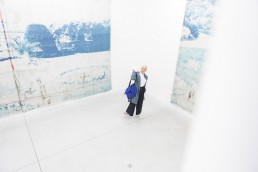
During this year’s edition, you present the exhibition Generation Brussels, based on a vision to discover, recognize and give support to a new generation of artists located in Brussels. Can you give us some insight into this exhibition and the thoughts behind it?
Brussels Gallery Weekend is about the galleries, but we also wanted to give a voice to the broader Brussels scene. As we have institutions, non-profits, foundations, and collectors in our Off-Program, we decided with the committee, that it is also part of our responsibility to show what a new generation of artists are doing in Brussels.
What does this year’s program reveal about the current trends and the general art market?
Our program reflects the diversity of our galleries. From the established galleries with blue-chip artists to new galleries with young talents and discoveries. There are also some revivals of older artists brought back into the limelight.
How would you describe the current state of the Brussels art scene?
The Brussels art scene is becoming stronger every year and is definitely worth a tour. Over the past years, international galleries have settled in Brussels, existing Brussels galleries have developed second spaces, non-profits have grown into galleries, and many young artists from Belgium and abroad have come to live in the city.

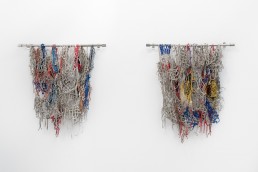
Who is Brussels Gallery Weekend’s main target group, and how do you seek to create audience engagement through your activities?
BGW has many different targets. To simplify this, you could say that some are part of the art industry. This would include collectors/patrons, artists/curators and other arts workers from both the public and private sectors. Targets within the industry benefit the primary role of galleries, which is to further the practice and careers of the artists they represent. But the galleries also want to reach the public at large and constantly reiterate the educational offer they bring to the city. Galleries are open and free to anybody. They offer exhibitions, catalogues, talks, performances and other activities, which constitutes a tremendous cultural offer for any interested citizen. This is why the Brussels Gallery Weekend also invests in organizing tours, guided visits, and partnering with several mobility projects. Finally, we wanted to underline the importance of connecting young people with art and therefore we created a pedagogic file that is downloadable on our website and also offer visits to schools, even after the event.
In your opinion, do too few people go to galleries in general? And what do you hope for collectors and the general public to take away from Brussels Gallery Weekend?
The Brussels Gallery Weekend was born because too few people visit galleries. Over the past years we have seen more and more people coming to visit the galleries. The public has discovered that there is an amazing cultural offer in the Brussels galleries and not only in its museums. They have also realized galleries are not only for collectors, but that the exhibitions are there for the broader public as well and that it’s a pleasure for gallerists to welcome people at their galleries and to tour them through their exhibitions.

Is there something that you are looking particularly forward to in this year’s program?
It’s hard to say as there are so many great exhibitions during the weekend. The Generation Brussels show is a project I’m looking forward to see unfold as we worked hard on it. Besides this, there’s such an amazing program at the galleries, which makes it difficult to choose. Among others I would say: the Sharon Lockhart show which takes places commonly at Gladstone Gallery and Jan Mot, Tyrrell Winston at Stems Gallery, Gilberto Zorio at Albert Baronian, Jean Marie Appriou at Clearing also Ed Atkins at dépendance, and many more! The great thing is that all the galleries make a special effort for their show during the Gallery September, so they’re all worth visiting!
What are your wishes for the future of Brussels Gallery Weekend?
I wish the Brussels Gallery Weekend can continue to grow and become a focal point in the agenda of people who love contemporary art.
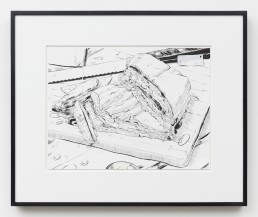
About Brussels Gallery Weekend
From September 6-9, Brussels Gallery Weekend holds it’s 11th edition. This year, 39 galleries, a dozen institutions and several artists run spaces will open their doors to the public.
Read more here.
Get your free copy of Artland Magazine
More than 60 pages interviews with insightful collectors.